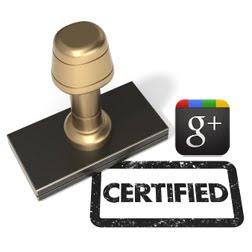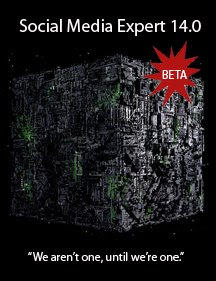You have probably heard some variation of the infinite monkey theorem, a clever little probability gem that suggests a universe of monkeys randomly striking keys on a typewriter will eventually deliver Shakespeare's Hamlet in entity, right? Well, as crazy as it seems, there is some truth to it.
Jesse Anderson used Amazon's cloud computing resource to create an army of virtual monkeys who randomly assembled some of Shakespeare's works. What's more, it takes significantly fewer monkeys to bang out a basic press release. A dozen or so can do it, maybe less with the right automated tools.
8 tools that that will change the way you don't think about public relations.
1. Start with a premise. Don't worry about coming up with news content again. Mash up existing headlines or enter a new subject for your premise and then plug in the name of your organization in place of the more popular names that come up. You'll have juicy ideas for news in no time.
2. Write a release. All you have to do is fill in the blanks to turn out reams of press-ready news releases, suitable for email and/or stationery. The automated program will even generate a properly formatted HTML code, complete with a beautiful array of background colors.
3. Make media contacts. Some public relations professionals are quick to tout their lists, but there are plenty of places to go, scrape, and call them your own. You'll have hundreds of emails in a matter of minutes, news hungry journalists who are waiting for something to drop right in their laps.
4. Submit to all. Too lazy to build a list? No problem. There are hundreds of submission software programs, wire services, and online distribution sites to ensure your news release goes anywhere and everywhere. Submit everything you do as often as possible.
5. Change it up. If you cherry pick three nouns from your news release and plug them into the right algorithm, it will immediately transform your news story into compelling content marketing. Make it a blog post headline or a white paper. It doesn't matter as long as you get clicks.
6. Make your own meme. Nothing says relevant like a meme. Transform your news and content into eyeball attracting memes for Twitter, Facebook, and Pinterest. Simply copy your headline into the caption and you are good to go.
7. Make another pitch. Follow up your press release with a well-timed post pitch, preferably one that has the sizzle journalists really seem to need nowadays. Plug in your topic one more time and get it all.
8. Take the call. Have the intern answer or, better yet, don't take the call. The industry is only a few years out from automated answering services that can be pre-programmed to answer any question a reporter might ask (or not answer any question by claiming you'll get back to them). Genius.
9.* Clip for success. Most people already know that Google captures all the news worth collecting, but few people know that you don't even need to make the news to be the headline. If the proof is in the clipping, skip all the other steps and make your own news! *Bonus tool.
See how easy it is? Public relations can be as easy or hard as you make it. And nowadays, you can make it all automated with a little less than a dozen monkeys running the show for big time results.
Links are not an implied endorsement. Results may vary. Good luck and happy April 1! For more April Fool's fun and communication satire, stick around and enjoy the archives from previous years.
Jesse Anderson used Amazon's cloud computing resource to create an army of virtual monkeys who randomly assembled some of Shakespeare's works. What's more, it takes significantly fewer monkeys to bang out a basic press release. A dozen or so can do it, maybe less with the right automated tools.
8 tools that that will change the way you don't think about public relations.
1. Start with a premise. Don't worry about coming up with news content again. Mash up existing headlines or enter a new subject for your premise and then plug in the name of your organization in place of the more popular names that come up. You'll have juicy ideas for news in no time.
2. Write a release. All you have to do is fill in the blanks to turn out reams of press-ready news releases, suitable for email and/or stationery. The automated program will even generate a properly formatted HTML code, complete with a beautiful array of background colors.
3. Make media contacts. Some public relations professionals are quick to tout their lists, but there are plenty of places to go, scrape, and call them your own. You'll have hundreds of emails in a matter of minutes, news hungry journalists who are waiting for something to drop right in their laps.
4. Submit to all. Too lazy to build a list? No problem. There are hundreds of submission software programs, wire services, and online distribution sites to ensure your news release goes anywhere and everywhere. Submit everything you do as often as possible.
5. Change it up. If you cherry pick three nouns from your news release and plug them into the right algorithm, it will immediately transform your news story into compelling content marketing. Make it a blog post headline or a white paper. It doesn't matter as long as you get clicks.
6. Make your own meme. Nothing says relevant like a meme. Transform your news and content into eyeball attracting memes for Twitter, Facebook, and Pinterest. Simply copy your headline into the caption and you are good to go.
7. Make another pitch. Follow up your press release with a well-timed post pitch, preferably one that has the sizzle journalists really seem to need nowadays. Plug in your topic one more time and get it all.
8. Take the call. Have the intern answer or, better yet, don't take the call. The industry is only a few years out from automated answering services that can be pre-programmed to answer any question a reporter might ask (or not answer any question by claiming you'll get back to them). Genius.
9.* Clip for success. Most people already know that Google captures all the news worth collecting, but few people know that you don't even need to make the news to be the headline. If the proof is in the clipping, skip all the other steps and make your own news! *Bonus tool.
See how easy it is? Public relations can be as easy or hard as you make it. And nowadays, you can make it all automated with a little less than a dozen monkeys running the show for big time results.
Links are not an implied endorsement. Results may vary. Good luck and happy April 1! For more April Fool's fun and communication satire, stick around and enjoy the archives from previous years.































